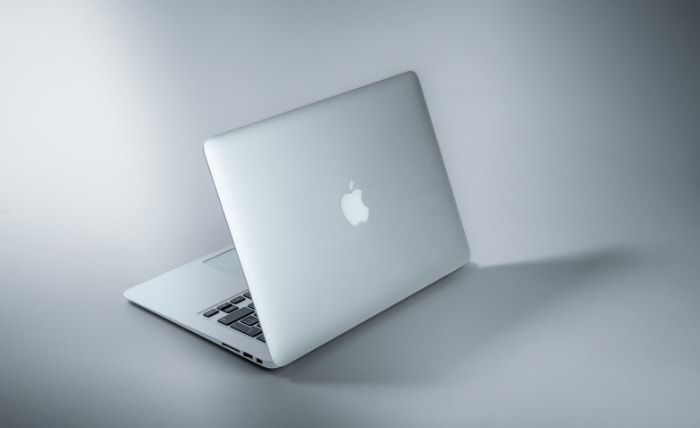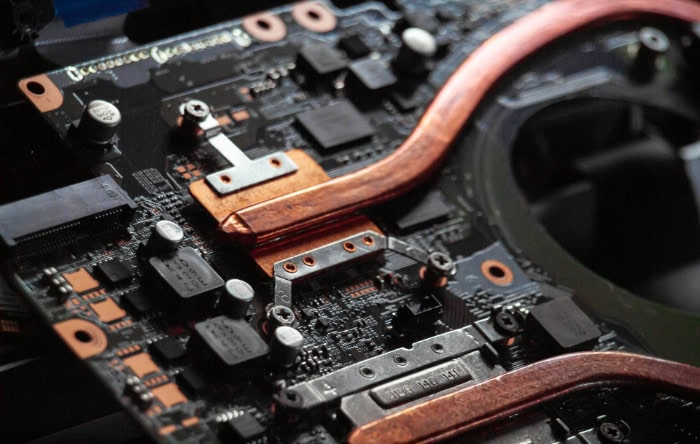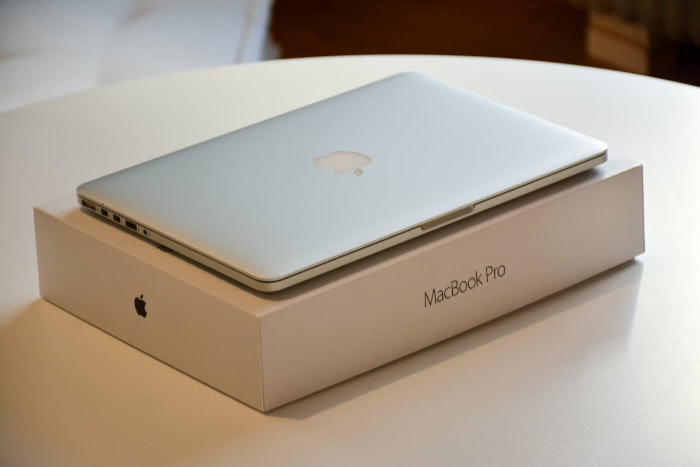Why Are Laptops So Expensive? Understanding the High Cost

Shopping for a new laptop can often leave you wondering why a slim, portable machine sometimes costs more than a powerful desktop tower. Sleek cases and impressive battery life look great, but those perks come at a surprising premium.
Powerful components must be squeezed into ever-thinner frames, and clever engineering is needed to keep everything cool and quiet. On top of that, brand reputation, constant design upgrades, and post-pandemic supply chain hiccups also shape price tags that make consumers pause.
Component and Design Costs
Rising laptop prices are about more than just powerful processors and stylish looks. A major part of the expense comes from the unique demands of fitting complex technology into a portable, compact form.
Unlike desktops, which have plenty of room to spread out hardware and use off-the-shelf parts, laptops require custom engineering and innovation at nearly every step. Meeting the expectations for long battery life, lightweight build, and reliable performance means manufacturers must make difficult choices and investments that directly increase costs.
Miniaturization Challenges
Fitting advanced hardware into a thin, lightweight body is never simple. Laptop CPUs and GPUs need to be both powerful and energy-efficient, yet compact enough to fit inside a slim case.
Sourcing and designing these specialized chips is far pricier than using their desktop equivalents. The challenge does not stop with the processor; even the cooling system must be custom-built, often using tiny fans or vapor chambers that can keep temperatures down in a very limited space.
Creating suitably small yet effective components often requires cutting-edge manufacturing techniques, which ramps up production costs.
Integrated Hardware
The all-in-one nature of a laptop brings added expenses compared to a desktop's modular design. Laptops combine the screen, keyboard, touchpad, battery, and webcam into a single frame, demanding careful coordination in design and assembly.
Each component, from a high-quality display to a reliable hinge or a backlit keyboard, adds to the manufacturing complexity and price. Unlike desktops, where users can easily swap or upgrade parts, laptops depend on custom-made, tightly integrated components that are more expensive to design and replace.
This integration delivers portability and convenience but also raises the bar for reliability, durability, and user experience, all of which come at a cost.
R&D Investment
Delivering a laptop that feels light in your bag but tough in daily use takes significant research and development. Manufacturers constantly push to find new ways to shed weight without sacrificing strength or heat management.
Advanced materials like magnesium alloy, carbon fiber, and specially treated plastics are engineered to deliver durability while remaining thin and attractive. At the same time, thermal management must be carefully balanced, keeping the device cool enough for performance yet quiet enough for comfort.
Every new generation of thinner, lighter, and more powerful laptops represents hundreds of hours and millions of dollars in prototype testing, design refinement, and engineering solutions. All of these research costs ultimately find their way into the final retail price.
Market Dynamics and Brand Pricing

The price of a laptop is shaped by much more than the sum of its parts. Competition between brands, economic shifts, and the broader tech marketplace all play a huge role in what consumers ultimately pay.
Choices made by manufacturers about design, reputation management, and supply chain resilience can raise costs well beyond the simple bill of materials. For buyers, these market factors explain why two laptops with similar specs might come with price tags that are hundreds of dollars apart.
Brand Premiums
A well-known logo on a laptop often means a higher price tag, but the reasons go beyond simple name recognition. Established brands like Apple, Dell, and Lenovo spend years building a reputation for quality, innovation, and reliability.
Customers willingly pay more for products they associate with durability, technical support, and top-tier user experience. For instance, Apple’s MacBook lineup earns its premium not only from design and materials, but also from a seamless software ecosystem and a dedicated support structure.
The same can be said for high-end models from other trusted brands. Shoppers are not just buying hardware, they are investing in a brand’s promise of performance, style, and peace of mind.
That reputation often gives companies confidence to charge more, embedding a “brand premium” directly into the retail price.
Supply Chain Pressures
Laptop production relies on a vast, interconnected web of suppliers from around the globe. Any disruption, such as chip shortages, factory shutdowns, or shipping delays, can immediately impact manufacturing costs.
After the global pandemic, the entire technology sector faced component bottlenecks and logistical challenges. Securing enough processors, memory chips, and displays sometimes meant outbidding competitors or paying more to guarantee timely delivery.
Such conditions have forced manufacturers to absorb higher material and shipping costs, which are often passed along to the customer. Even as supply chains begin to stabilize, lingering effects keep prices higher than many expect.
Limited Competition
Desktops win on customization and DIY repairs, letting buyers mix and match parts or build a whole machine from scratch. Laptops offer no such flexibility.
Engineering complexity, patent restrictions, and the need for proprietary designs make it nearly impossible for individuals to build a laptop from individual components. Since only a handful of brands control the market, competition is far less cutthroat.
Consumers see fewer true bargains and less price pressure downward. Manufacturers set their own standards for features and price points, with little risk that shoppers will bypass them for a homemade alternative.
That lack of flexibility leaves buyers with fewer options and helps keep laptop prices firmly in the higher range.
Performance vs. Price Trade-Offs

Choosing a laptop often comes down to finding the right balance between what you need and what you are willing to pay. Manufacturers offer a staggering range of models, each targeting specific uses such as everyday browsing, gaming, or professional creative work.
Big price leaps are not always linked to core performance; sometimes, costs are driven up by premium features or the promise of future-proof specs.
Budget Laptop Pitfalls
Lower-priced laptops can be tempting, especially for students or those with basic computing needs. However, cutting costs usually means making sacrifices.
Budget models often use cheaper plastic housings, lower-resolution displays, and less efficient cooling. Many limit or completely remove options for upgrading memory or storage, which reduces their useful life if your needs change. Affordable laptops may also ship with older components that become obsolete faster, forcing users to replace them sooner than they might like.
Going for the lowest price can lead to frustration down the line if the device struggles with multitasking, wears out quickly, or lacks modern connection options.
Gaming and Workstation Premiums
Gamers and professionals working with graphic-intensive tasks face a different situation. Demanding applications require top-tier graphics cards, powerful processors, and screens with fast refresh rates.
Fitting all that performance into a thin, portable chassis without overheating means manufacturers must invest in advanced cooling systems and power delivery components. The extra engineering, specialized hardware, and stricter quality control all contribute to steep price increases for gaming and workstation models.
Buyers pay a premium for the ability to render video, run simulations, or play modern games smoothly on the go, and every performance jump adds to the final cost.
Feature Inflation
Laptop manufacturers compete not only on specs but also on features meant to catch your eye in a crowded store or online listing. High-end displays like OLED or 4K panels, ultra-thin builds, fancy hinge designs, or touchscreens drive up prices significantly, even if they do not contribute much to everyday performance.
While such features can make a laptop feel modern and stylish, they are not always necessary for most users. Feature inflation means you might spend extra for things you end up rarely using, and in many cases, that money could be better invested in a faster processor or more memory.
Shoppers need to weigh how much these extras matter compared to the practical benefits of a well-built, reliable laptop.
Hidden Costs and Long-Term Value

The true cost of a laptop does not end at checkout. As the years pass, certain design choices and software decisions can quietly increase the total price of ownership.
What seems like a great deal up front may become less attractive as replacement expenses, gradual slowdowns, or the need for early upgrades start to add up.
Planned Obsolescence
Modern laptops often feature components like RAM and storage permanently soldered to the motherboard. While this approach allows for thinner and lighter designs, it shuts the door on future upgrades.
If you ever need more memory or extra storage, your only choice may be to replace the entire device. For students and professionals alike, this can mean investing in a new laptop much sooner than you would with a machine built for easy upgrades.
Planned obsolescence not only adds to your long-term expenses but also creates more electronic waste, as otherwise-functional hardware ends up discarded simply because it cannot be easily improved or repaired.
Battery Degradation
The battery is another hidden cost that creeps up quietly over the years. Every charge cycle brings a laptop’s battery closer to the end of its lifespan.
Eventually, a once-portable device becomes frustratingly tethered to a power outlet. Replacing a battery can be expensive, especially in models where access is restricted or requires professional servicing.
The expense is not just financial; the environmental impact of disposing and replacing lithium-ion batteries also deserves attention. Users who rely on portability should factor in the likelihood and costs of battery replacement after a few years of use.
Software Bloat
Pre-installed apps and software suites often come loaded on new laptops. While some tools can be useful, many programs take up valuable storage, slow down performance, and nag users with unwanted notifications.
Over time, these “bloatware” apps can create a sluggish experience, making the laptop feel older or less capable than it should. Clearing out unnecessary software can help, but updates and new background services may continue to appear.
A machine that runs smoothly on the first day may require regular maintenance to avoid the creeping frustration of software bloat, making performance management part of the real, ongoing cost.
Mitigating High Costs

Laptops often feel like a major investment, but smart shoppers have several strategies to ease the pressure on their wallets. Looking beyond the glitzy advertising and the lure of the newest models can lead to substantial savings and better durability.
Thoughtful choices, such as considering different types of devices and timing your purchase right, can have a real impact on both your initial expense and the long-term value you get out of your technology.
Refurbished and Business Models
Buying refurbished or off-lease business laptops offers a compelling path for anyone wanting strong performance and durability without paying full retail prices. Business laptops tend to be built with higher-quality materials and stricter durability standards, designed to withstand years of daily use.
After companies retire these machines, they often return to certified vendors for cleaning, inspection, and component upgrades before being resold at much lower prices. Refurbished consumer models are also thoroughly tested and usually come with warranties, providing added peace of mind.
For those who prioritize value and reliability over shiny packaging or the latest features, refurbished or business-class options make a lot of sense.
Alternatives to New Laptops
Not every task demands a brand-new laptop. For stationary work, a desktop PC or mini PC can deliver excellent performance at a lower price, while also offering easier upgrades and repairs.
Tablets with detachable keyboards have grown more versatile and can comfortably handle web browsing, note-taking, or streaming. The right alternative depends on personal habits and workspace, but staying open to multiple device types can free up budget for better accessories or higher-quality components.
Strategic Purchasing
Patience often pays off during laptop shopping. Retailers and manufacturers regularly slash prices around back-to-school season, Black Friday, and holiday sales.
Keeping an eye on upcoming sales cycles, subscribing to manufacturer mailing lists, and comparing prices at multiple outlets helps you spot deals that can cut hundreds off the sticker price. Sometimes previous-generation models receive deep discounts when new versions launch, offering nearly the same performance at a fraction of the cost.
A little planning can turn a stressful, expensive purchase into a savvy investment that stretches your technology budget much further.
Conclusion
Laptop prices reflect a complex blend of engineering challenges, market realities, and consumer expectations. Squeezing advanced hardware into ever-lighter, more portable designs demands costly research, custom components, and thoughtful integration.
Major brands add their own markups, while global supply chain issues and limited competition keep prices stubbornly high. At the same time, flashy features, planned obsolescence, and hidden ownership expenses complicate the value proposition.
However, smart choices such as considering refurbished units, timing your purchase with major sales, or exploring alternatives to new laptops can make a real difference. Weighing your actual needs against marketing buzz and trendy extras helps ensure your money goes toward a device that truly fits your lifestyle.
Careful, well-timed decisions allow you to balance performance, durability, and price, turning a major purchase into a lasting investment.


